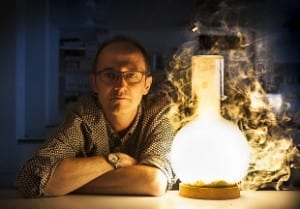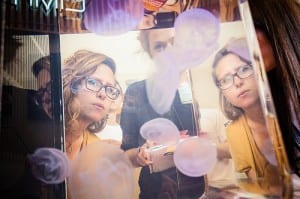Can we teach chemistry with explosions alone?
By Oli Usher, on 20 February 2015

Professor Andrea Sella (UCL Chemistry)
Explosions, eruptions and exothermic reactions are the backbone of chemistry demonstrations. Generations of kids have been wowed by them.
But do they really learn much from it?
Professor Andrea Sella (UCL Chemistry) is a major purveyor of these explosions at science festivals and shows around the country. (He is also the only person I know who, when asked to sign off a risk assessment form full of apparently irresponsible pyrotechnics, was able to truthfully reply: “I make 7 foot fire tornadoes all the time, I’m sure it’s fine.”)
Having won the Royal Society Michael Faraday Prize for his explosion-based science outreach, Sella used the opportunity of his celebratory public lecture (‘Is chemistry really so difficult?’, 9 February) to make a plea for… well, not the complete elimination of explosions from public lectures, but more thoughtful and judicious use of them.
But first: one last opportunity to “blow sh*t up”, in this case, a can of hydrogen. Cue laughter and applause.
Back on track. For centuries, chemists have tried to impress people by blowing things up, he says, but this gives a false impression of what chemistry is really about. It suggests that it’s exciting, and that it’s dangerous. It wows the crowds, but from a scientific perspective it’s not actually all that interesting. Flashes and bangs are chemistry porn, and they undermine recognition of modern chemistry as one of the towering intellectual achievements of our time.
 Close
Close


